[ad_1]
As every Jersey kid knows, our pivotally positioned state played a central role in the Revolutionary War. The battles of Monmouth, Trenton and Princeton were contested here. General George Washington led his army across our plains, woods, wetlands, and rivers four times, encamping his troops through three miserable winters.
The Revolutionary years weren’t easy for civilians, either. Skirmishes and melées raged between patriots and British loyalists. Perhaps then, as now, Jerseyans put their differences aside to tipple and sup in a local tavern, “chophouse,” or “publick house.”
The following distinguished establishments were up and running by 1776. If these old walls could talk!
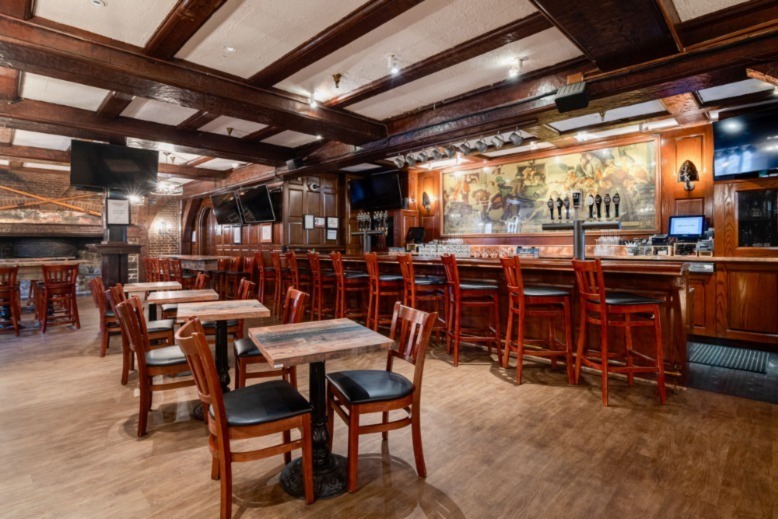
Yankee Doodle Tap Room’s mural, by Norman Rockwell, depicts his imagining of the Revolutionary-era folk song, Yankee Doodle. Photo: Courtesy of Nassau Inn.
You don’t expect your hotel bar to come with centuries of stirring history. But this one does. The hotel is Princeton’s Nassau Inn, and the bar is Yankee Doodle Tap Room.
The Inn opened for business in 1756, when Princeton University, then 10 years old and known as the College of New Jersey, relocated from Newark. The building that now houses Yankee Doodle was the Inn’s equine stables, transformed into the tap room in 1939.
“The wooden beams and stonework are from the stables,” says food and beverage director Virginia Fry. “The feeling is pure Americana, with hand-finished wood everywhere and antique lamps. You walk in and expect to see George Washington sitting in a booth.”
Yankee Doodle is “the unofficial pub of Princeton alumni, grad students, and faculty,” Fry says. “The food is sophisticated modern gastropub, and the theme is Princeton. We have Princeton trophies and memorabilia everywhere, including portraits of alumni Michelle Obama, Brooke Shields, and General Petraeus.
“And our patrons love the old wooden booths, where generations of Princetonians carved their initials or names, such as ‘Dr. Einstein.’”
Another Yankee Doodle draw is Norman Rockwell’s largest painting, 13 by seven feet, depicting the Revolutionary folk hero who went to town.
10 Palmer Square, Princeton; 609-688-2600
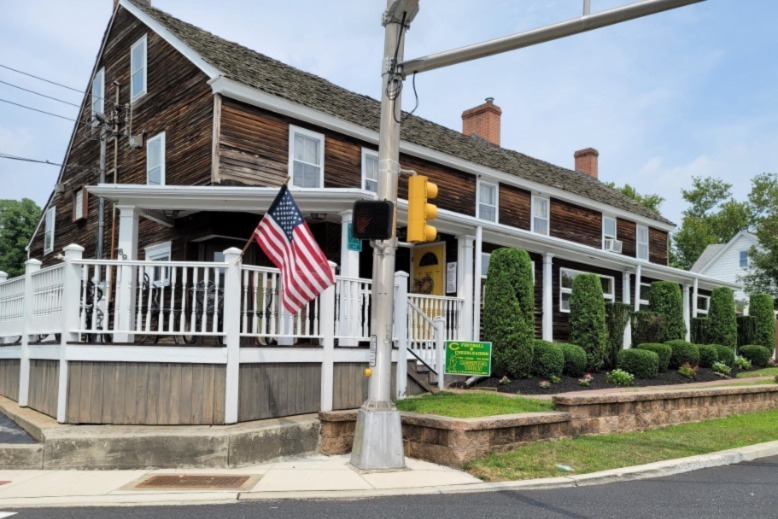
Barnsboro Inn has been a stalwart in the Sewell community for almost 300 years. Photo: Courtesy of Barnsboro Inn.
In 1776, Jerseyan John Barnes bought a rambling, 56-year-old, hilltop log house in Mantua Township, 20 miles from Philadelphia: close enough to feel its Revolutionary fervor. Barnes petitioned the Gloucester County court for a tavern license and soon set up shop as an inn and pub. It might be inferred that locals liked celebrating their independence. The tavern and inn became so popular that the location, once called Lodgetown, was renamed Barnesborough, later shortened to Barnsboro.
Al Scuderi has owned the inn since 2021. “But,” says the CPA and lifelong Gloucester resident, “Barnsboro Inn played a big role in my upbringing. My dad and his officemates, who worked five minutes away, had lunch there every work day for years. My parents came here together with a babysitter at home, and we’d come as a family several times a year.
“As a Washington Township High School student, I’d bring my dates here. I’ve been a regular nearly my whole life, and I’m 56. From the beginning, I felt like I was time traveling. The low ceilings and twisty stairs, the incredible notched beams, the beautiful, time-darkened woodwork, and all the history on the walls: Letters, deeds, flags, photos of Teddy Roosevelt at his rally here.”
“Barnsboro Inn always made me feel good. It was an open secret that I wanted to buy the place. After many twists and turns, I was able to do so. I’ve changed the menu. It’s broad and there’s something for every mood—fried seafood, tacos, flatbreads, salads, sandwiches, burgers, steak, salmon. It’s all high-quality but not high-price. I want my customers to love Barnsboro Inn as much as I always have.”
699 Main Street, Sewell; 856-468-3557
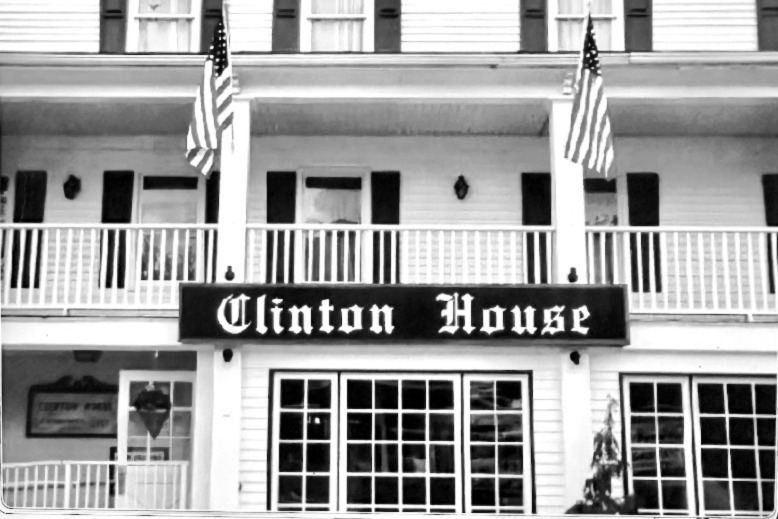
Patrons at Clinton House can expect a Colonial environment and farm-to-table cuisine. Photo: Courtesy of Clinton House.
The Clinton House—set in the graceful downtown of its Hunterdon County town, went up in 1743. Its authentic Colonial style, white with lots of balconies and window shutters, “still looks elegant,” says manager Christine Maniet.”
Once a place for locals to gather and for travelers to sup and sleep, The Clinton House today is “a destination for sustainable seafood and farm-to-table locavore dining,” Maniet says. “We have a deep wine list and lots of American spirits.”
No matter what patrons order, “everyone loves the historical details, like stone fireplaces, stained-glass windows, old wooden beams, and original brick walls. New Jersey may be ultra-modern, but the past is also part of who we are.”
2 West Main St, Clinton; 908-730-9300

Located halfway between New York and Philadelphia, the Cranbury Inn was an important meeting place during the Revolutionary War. Photo: Courtesy of the Cranbury Inn.
Built from the 1750s through 1760s, The Cranbury Inn “is set halfway between New York and Philadelphia,” notes owner Bill Arnold.
The inn made an ideal way station on what was then an overnight city-to-city trek via horse-drawn carriage. It offered rooms for weary travelers, stables for their steeds, and food and drink for all.
“Because of its strategic location, and all the Revolutionary military action going on in Central Jersey,” Arnold says, “the Inn became a busy meeting place.
“Local history and lore suggest that later, in the mid-1800s, the Inn was a safe house on the Underground Railroad, hiding slaves running for their freedom,” Arnold continues. “Cranbury’s town center is on the National Register of Historic Places, and our regular guests can’t get enough of our stories and ambiance.
“Kids especially are impressed by our displays of Revolutionary muskets and powder horns. We have a kids’ menu, and for the folks, a full bar, burgers, salads, and classics like roast duck, prime rib, and turkey with the trimmings.”
“Connecting with the past,” Arnold muses, “is not something most of us do often. But that’s what The Cranbury Inn lets you do.”
21 South Main Street, Cranbury; 609-655-5595
Morris County’s Black Horse Tavern & Pub is the oldest continuously serving restaurant in the state. It was first the home of Ebenezer Byram, whose family settled Byram Township in Sussex County. The house was sold and became a hostelry in 1742. Its appearance is distinctively Colonial, with trellises of red roses and old-fashioned red, white, and blue bunting on ample balconies.
The Tavern is now dedicated to private events. But the Pub carries on its long-established tradition of serving brew, liquor, and uncomplicated, soul-satisfying food with English and American roots: chicken pot pie, fish and chips, ribs, chili, crab cakes, and more. Brunch brings house specialties like kitchen-made corned beef hash and the Jersey Sammy with Taylor ham, fried eggs, and American cheese on a roll, with fries on the side. Now, that’s classic Garden State.
1 West Main Street, Mendham; 973-543-7300
In 2003, Joanne and Brian Goode moved from Manhattan to buy and run this 1740 establishment in Burlington County. “We haven’t looked back,” says Brian. “The place’s charm, energy, and cheerfulness won us over. We realized right away that this inn has always been a regional hub and a hive of activity. It was a meeting place, a polling place, an inn, a tavern. It sits at the precise midpoint between Philadelphia and the wharves at Salem, where the gentry would board ships to visit their families up and down the East Coast.
“So Ye Old Centerton Inn was a place where you’d find out the news and the new ideas,” Goode adds. “I can only imagine the scene in 1776. We still get visitors from Philly and all over South Jersey. There’s a lot of authenticity here, and they come for the history.
“And of course guests come for our food. This is South Jersey, so we serve fresh seafood, plus steaks and a lot of Italian dishes. No matter the dish, the sauces are great. The desserts are rich and the cocktails are fun. But for me, Centerton’s magic is what I call its historic patina: the Colonial atmosphere combined with what I think of as the glow of community.”
1136 Almond Road, Pittsgrove; 856-358-3201
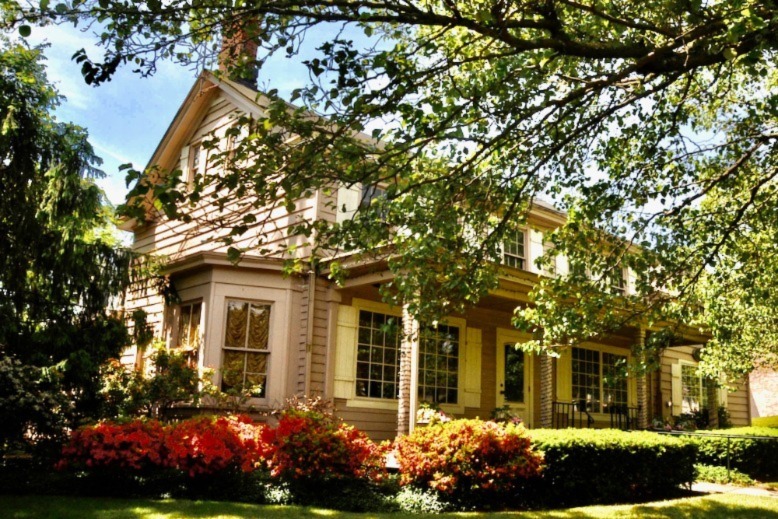
While his troops camped nearby, George Washington slept in friend Jacob Morrell’s house. Photo: Courtesy of Wikimedia Creative Commons, Roy Klotz.
Long before this handsome Colonial residence became, in 1995, the gracious Northern Italian restaurant Scalini Fedeli, it was built as Jacob Morrell’s home. The year was 1740. Scalini Fedeli’s chef-owner, Michael Cetrulo, has delved into his property’s past.
“From my research and the letters I’ve dug up,” Cetrulo says, “it was called the Jacob Morrell House, and later Chatham House. Morrell was an outspoken Patriot and friends with George Washington. When General Washington and his troops camped nearby, the General slept in Morrell’s house. Maybe that’s where the expression ‘George Washington slept here’ comes from.
“While here, the General wrote letters to his commanders with his quill pen, detailing strategies for where, when, and how the Revolutionary Army was going to attack British troops. But Washington knew his messenger would be captured. So he filled his letters with false information that succeeded in deceiving the Redcoats.
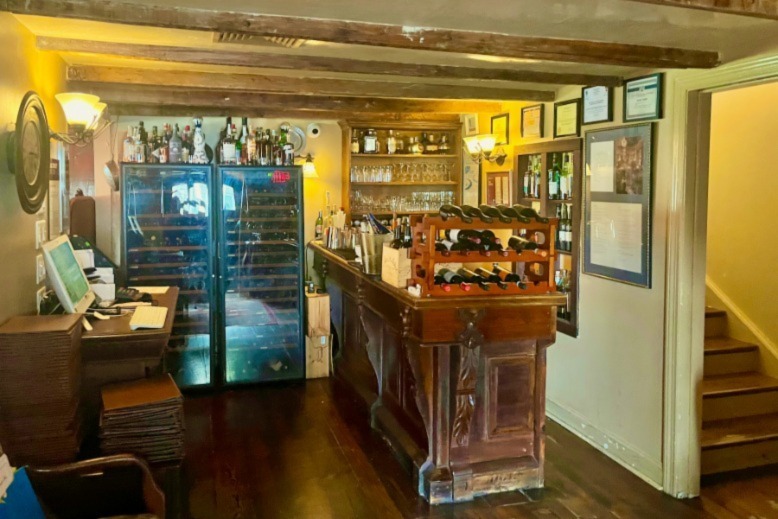
Drinks are poured in Scalini Fedeli’s service bar. Photo: Courtesy of Scalini Fedeli.
“Though this property is so important to New Jersey history,” Cetrulo continues, “it was never landmarked because it wasn’t kept up. I could and did restore the house’s exterior, but the interior was a shambles when I bought it. I built a large dining room with a coffered, arched, antique-looking ceiling the likes of which early New Jerseyans could have seen only in Italy.”
“But there’s one small room which somehow escaped all the structural degradation. It’s our service bar, and it feels out of the past. If you order a glass of dark rum, Port, or Madeira, like the Colonists used to, it’s poured in this old room, and your drink is a moment of history.”
63 Main Street, Chatham; 973-701-9200
No one knows New Jersey like we do. Sign up for one of our free newsletters here. Want a print magazine mailed to you? Purchase an issue from our online store.
[ad_2]
Source_link


